Handshakes have been in the diplomatic news a lot lately. Let’s see if we can grasp why.
Here are some basic points, some questions, and a self-test that you can take yourself:
The diplomatic handshake is just one variation of the handshake.
And handshakes are just one type of physical greeting.
The importance and meaning of the handshake must be considered along with body language, eye contact and verbal greetings to determine the message it is sending.
Various ethnic, cultural and demographic groups have different forms of greetings such as kissing, bowing, kowtowing, etc. that can range from intimate to friendly to formal. Each has its purpose depending on the recipient and the message being sent.
Questions to consider include:
I’m sure you can think of other diplomatic handshaking questions.
Thinking about this my thoughts drifted back to some memorable
handshakes I’ve exchanged with diplomats and Dippers over the years. Surprisingly, not many of the diplomats impressed me with their handshakes, but many of the Dippers did. Even now, in some cases fifty years later, I can remember the handshakes of Brian Bailey, James Justin Dygert, Jim Woodson, Ron Spitzer, Steve Cooley, David Hood, Matt McVeigh, Chris Martin and Andy Bartalone among others.
Try this experiment. Look at some of the Diplomacy Facebook sites. Look at the members’ pictures. Now find the ones you’ve met at Diplomacy FTF events. Can you remember if you shook hands with them at some point during the event? What kind of handshake was it? You might be surprised at what you can remember.
As to be expected, Wikipedia has an entry on the handshake that includes a country-by-country list of dos and don’ts handshaking customs in various countries.
A search on Diplomatic handshakes provides even more more detailed information on that subject
Lots of videos on diplomatic handshakes are on YouTube videos. One nice thing is that most of them are pretty short. Most handshakes last about five seconds. A long one is considered to be around ten seconds. Theodore Roosevelt held the record for the most handshakes (8,510) in a single day (January 1, 1907) for many years but in 1987 a Brit broke the record with 19,550! Since then the record has been broken various times. Someone has calculated that the president of the United States shakes about 65,000 hands a year.
The art of the diplomatic handshake has gotten a lot of media attention lately but it was the refusal to shake hands with German Prime Minister Angela Merkel by US President Donald Trump that brought public attention to this longtime diplomatic custom.
Then in May 2017 multiple incidents of handshaking involving world leaders appeared in the media, online, and on twitter. Here are some examples and you can find videos of them on YouTube. Most of the comments were humorous but a few like Chris Cillizza’s actually offered some real insights into the significance of this seemingly simple action. You can read the entire CNN article here
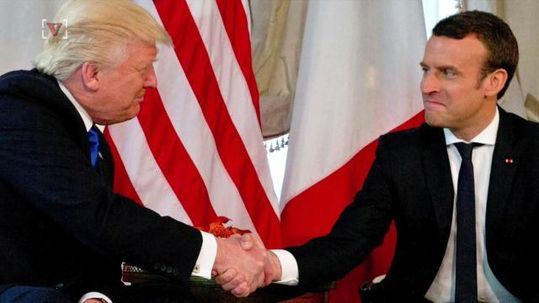
Chris Cilizza, Washington (CNN) — There's a tendency among
seriouspeople to dismiss the importance of the pomp, circumstance and symbolism in politics.Focus on the policy, not the perceptions!they shout. Who cares about the fluff!?!?!Emmanuel Macron, for one.
The newly elected French president told a French journal Sunday that his handshake with US President Donald Trump during a meeting during the NATO gathering in Brussels last week was about much more than just an exchange of pleasantries.
My handshake with him, it's not innocent,Macron said.It's not the alpha and the omega of politics, but a moment of truth.He added:
One must show that we won't make little concessions, even symbolic ones.[…]
A few days later in a media interview Macron revealed that his handshake with Trump was not innocent
, but by then the media was already focusing on his handshake with Canadian Prime Minister Justin Trudeau and calling it the beginning of a new bromance.
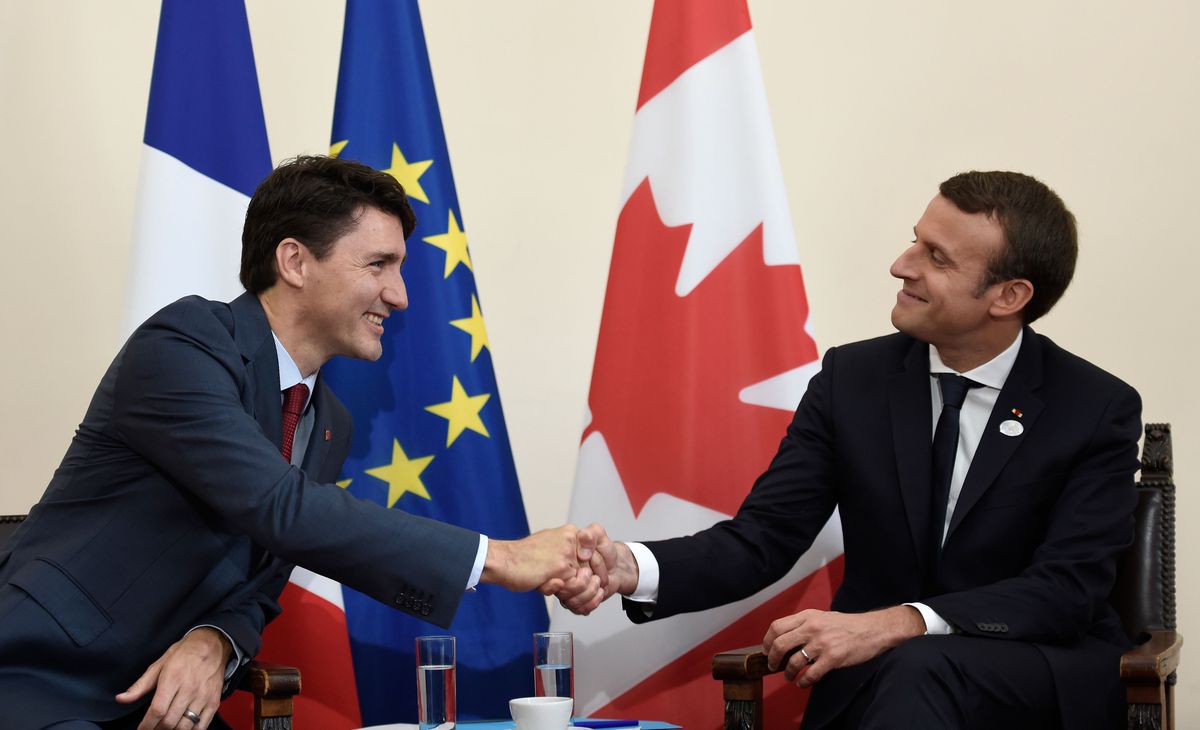
Back at home in Paris Macron welcomed Russian President Vladimir Putin, for what were labelled as important talks
being held at the Versailles Palace. The excuse for the invitation was an exhibit marking the 300th anniversary of a visit to Versailles by Russian Tsar Peter the Great. The fact that the exhibit was located in the famous Gallery of Battles
, which commemorates the glories of French arms, was probably not lost on Putin. However, the fact that the last battle represented was Wagram of 1809 (three years before Napoleon arrived at Moscow’s gates) made the site acceptable to the Russians. Perhaps.
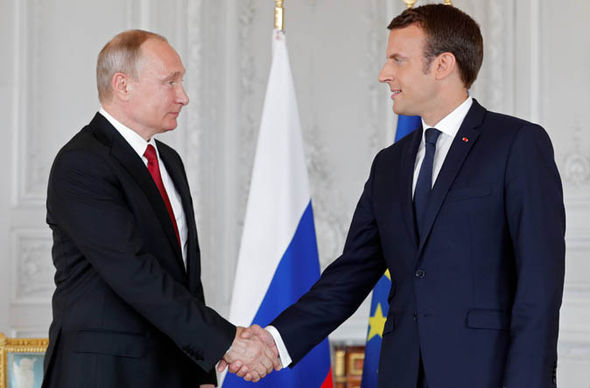
A review of the video of the Macron and Putin handshake shows that it was correct
, in the words of the BBC; perfunctory
, in the words of The Telegraph; the handshake the world waiting for
, according to The Washington Post; and awkward
said The Independent.
In a time when the Diplomacy hobby’s attention has shifted from FTF play to internet play, the art of the Diplomatic handshake has gone the way of wooden pieces, eighteen center wins, and timer clock-free games. Still, at DipCons and World DipCons knowing how to handle a handshake can make or break more than just a finger or two.
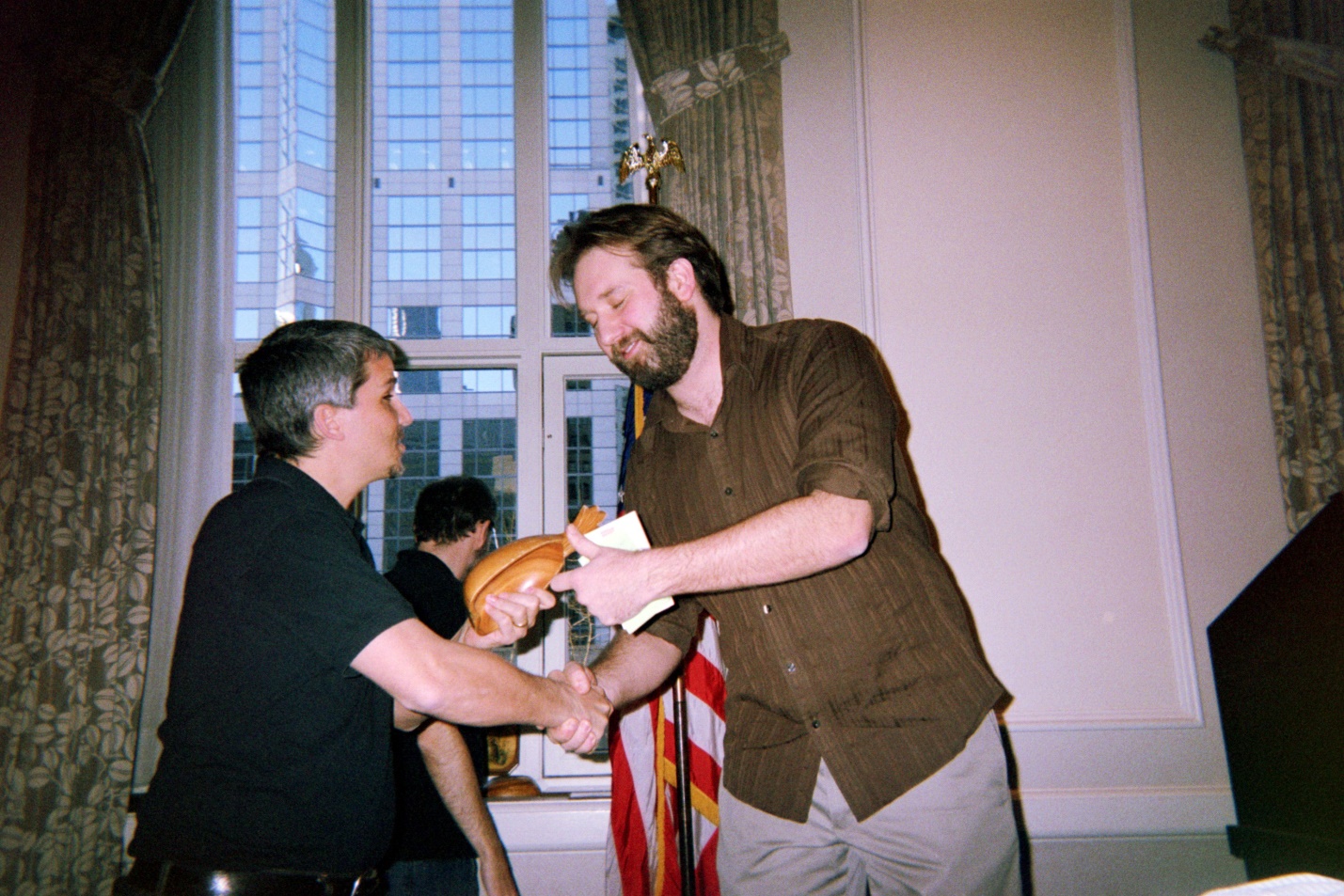
Chris Martin (l), 2nd Place, and Nathan Barnes at DIPCON XLVII.
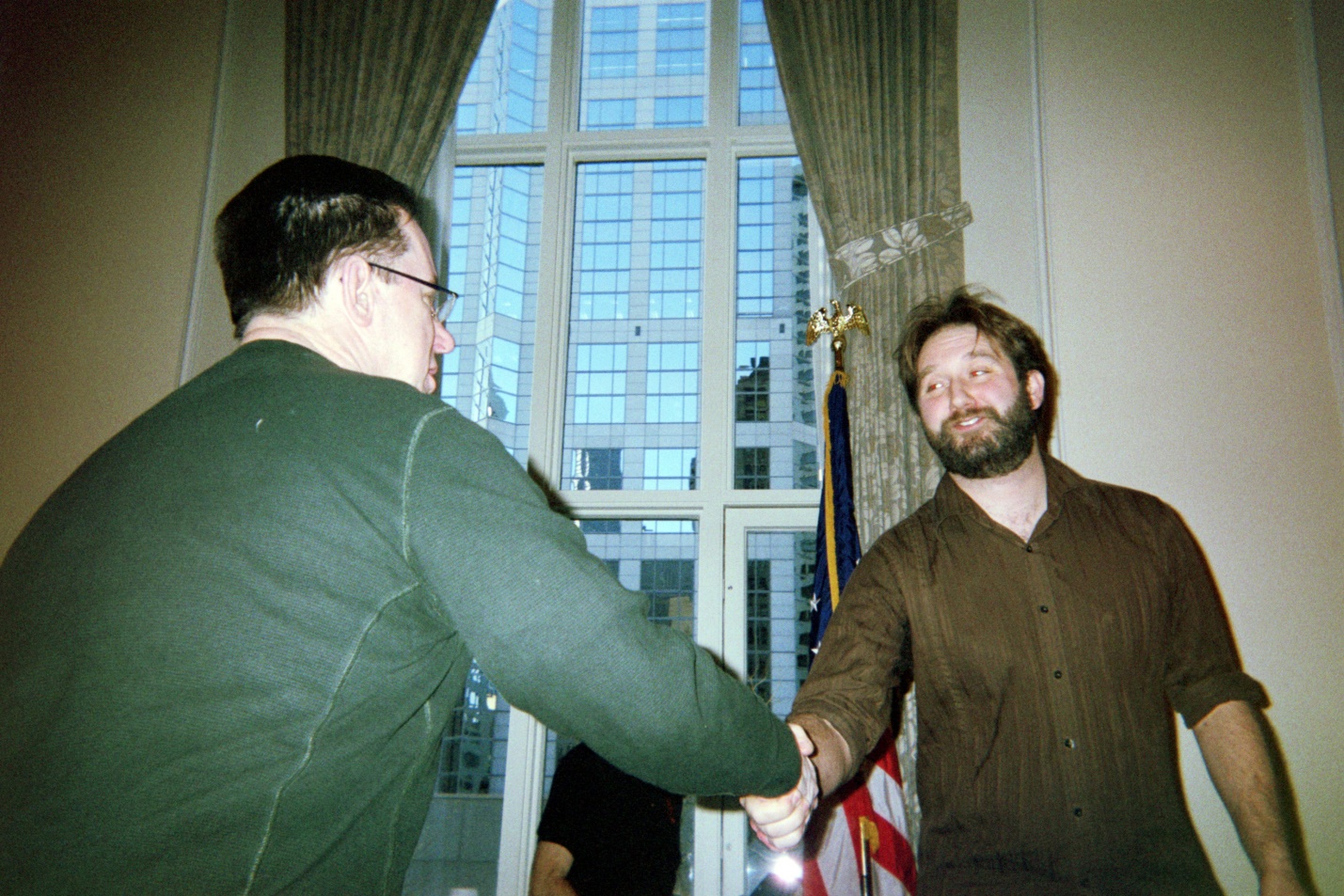
Steve Cooley (l), 3rd Place, and Nathan Barnes at DIPCON XLVII 2014, in Seattle.
Dan Lester, from the United Kingdom, won the Seattle event and the Best England Award. He will be hosting the 2017 WDC in Oxford, England, if you want to see what he looks like and how he shakes hands. For more information
THE BREAD AND SALT
Sometimes a handshake, a certificate, a medal, a trophy or even a prize isn’t enough. Special events call for something special. The Masters has its green jacket. PEERICON had its blue t-shirt. Both are traditions that give a special meaning to an event that could otherwise be called ordinary. In Russia there is a tradition that they call the Bread and Salt
Custom.
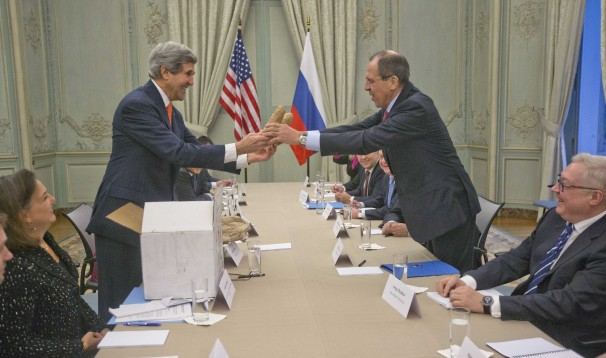
US Secretary of State John Kerry receives the traditional Bread and Salt
from Russian Foreign Minister Sergey Lavrov on his first visit to Russia in 2013.
In Russia there is a very interesting tradition called Bread and Salt
. Any tourist or official who comes to Russia is greeted with this custom.
When important, respected, or admired guests arrive, they are presented with a loaf of bread placed on a tray as a sign of hospitality.
The Bread and Salt
is a form of specially baked round bread with a salt shaker placed on top of the bread. You can find this custom being practiced during official events and even in restaurants when you go with a group of tourists.
Usually the Bread and Salt
on a round tray is covered with an embroidered towel and is presented by a young woman dressed in a national costume (e.g., sarafan
with kokoshnik
).
If you are presented with a Bread and Salt
, you should help yourself for sure: you need to break off a piece of bread, dip it in salt and eat it with a smile. You should not refuse, or the host would get greatly offended.
Bread and Salt?
Bread in many cultures is a very revered product. Bread in Russia symbolizes abandon and wealth. Since ancient times salt has been valued a lot in Russia, and people believed that salt offered protection from evil forces.
The Bread and Salt
tradition appeared in Russia long time ago. In one of the written sources – a collection of rules and precepts of the 15th century – Domostroy
we can read that this custom is very old and the Bread and Salt
is presented during celebratory events and at the time of mourning as well.
In the Middle Ages Russian people also believed that if enemies shared Bread and Salt
with each other they would become close friends.
Even today a good host in Russia is a person who treats his guests very well and follows the Bread and Salt
tradition.
If shaking hands passes germs, imagine what rubbing noses will do.

|
Larry Peery [{Function}] (peery@ix.netcom.com) |
If you wish to e-mail feedback on this article to the author, and clicking
on the envelope above does not work for you, feel free to use the
Dear DP...
mail interface.